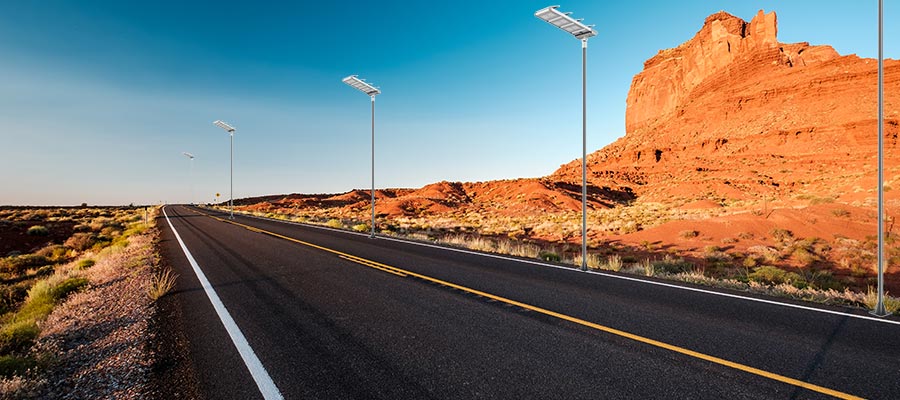Basic Knowledge About Solar LED Street Lamp
2021-10-11
VIEW "1689
With the further development of the global economy, the contradiction between energy supply and demand has become increasingly prominent. Today's world energy consumption is dominated by fossil energy, a small number of countries such as China dominated by coal, and most other countries dominated by oil and natural gas. These energy sources are all non-renewable and have serious environmental pollution. In order to alleviate the energy crisis, many countries in the world are actively developing renewable energy. As a kind of environmentally friendly and safe renewable energy, solar energy has attracted more and more attention. At this time, the development of solar street lamps in the field of lighting has become increasingly perfect. Solar led street lamps are powered by crystalline silicon solar cells, batteries store electrical energy, ultra-bright lamps are used as light sources, and are controlled by intelligent controllers, which are used to replace traditional public power lighting. If you are new to this industry, there is a lot of basic knowledge you need to know about solar led street lamp.

1. Solar street light source
There are many kinds of light sources for solar powerd led street lamps, the commonly used ones are induction lamps, metal halide lamps, LED lamps, and ordinary energy-saving lamps. Which light source is better? The cost of metal halide lamps and ordinary energy-saving lamps is not high, the service life is long, and the maintenance is convenient. However, this kind of street light source generates more electricity costs, so it is not recommended to choose. Induction lamp is also a kind of energy-saving lamp, the theoretical lifespan is relatively long, but the cost is relatively high. LED is the most used light source for solar led street lights in recent years, with high efficiency, energy saving, high luminous efficiency, long lifespan, easy maintenance, and low price. The LED light source is still unidirectional, and the illumination effect is better, and there will be no diffusion. Many countries are vigorously promoting LED, street light source selection recommends LED, solar powered led street lamp is the best choice for road lighting.
2. Types of solar street lights
There are many types of solar led street lamps. Different application places need to match different lamps.
- According to the source of power supply, there are mainly: city circuit lights, solar street lights and wind-solar complementary street lights.
- Divided by shape: single-arm street light, double-arm street light, and integrated solar street light.
- According to the height of street lights: high pole lights, middle pole lights, courtyard lights, lawn lights, underground lights.
- According to the material of street lamp pole: hot-dip galvanized iron street lamp, hot-dip galvanized steel street lamp and stainless steel street lamp.
- According to the height of solar led street lamps: 6 meters solar street lamps, 7 meters solar powered street lamps, 8 meters solar street lights, 10 meters solar led street lamps, 12 meters solar led street lamps, etc.
3. Parameters need to check
Solar panel power: The key to determine whether your solar light can be fully charged.
Battery capacity: determine how long your solar light can work
LED light source chip brand and quantity: determine the brightness of the solar lamp
System Controller: Determines the service life of the solar lamp
4. Solar led street lamp interval
The installation distance of solar led street lamps is determined by various factors such as the lighting power of the street lights, the height of the street lights, and the width of the road. The distance between street lights is generally 3.8 to 4 times the height of the poles. The longitudinal spacing of street lamps is generally 30 meters to 50 meters, and when there are power poles or other electrical poles, the spacing is 40 meters to 50 meters. Try to combine power supply poles with lighting poles to save investment. If underground cables are used for power supply, the spacing should be small, which is conducive to the uniformity of illumination. The spacing is usually 30 meters to 40 meters.
5. Solar panel orientation
The solar panels should be facing the direction of the sun with the most sufficient sunshine time. Generally, in Central China and South China, the solar panels face the south. In West China and North China, the solar panels face 5 degrees west of due south. It should be noted that the direction of the solar panels can be adjusted appropriately according to the shelter of buildings or trees, generally within 20 degrees to the west or east (the effect of the west is better than the east). Solar panels need to be cleaned regularly and can't be covered by dead leaves or dust, otherwise, the conversion rate of solar energy will be greatly reduced.

